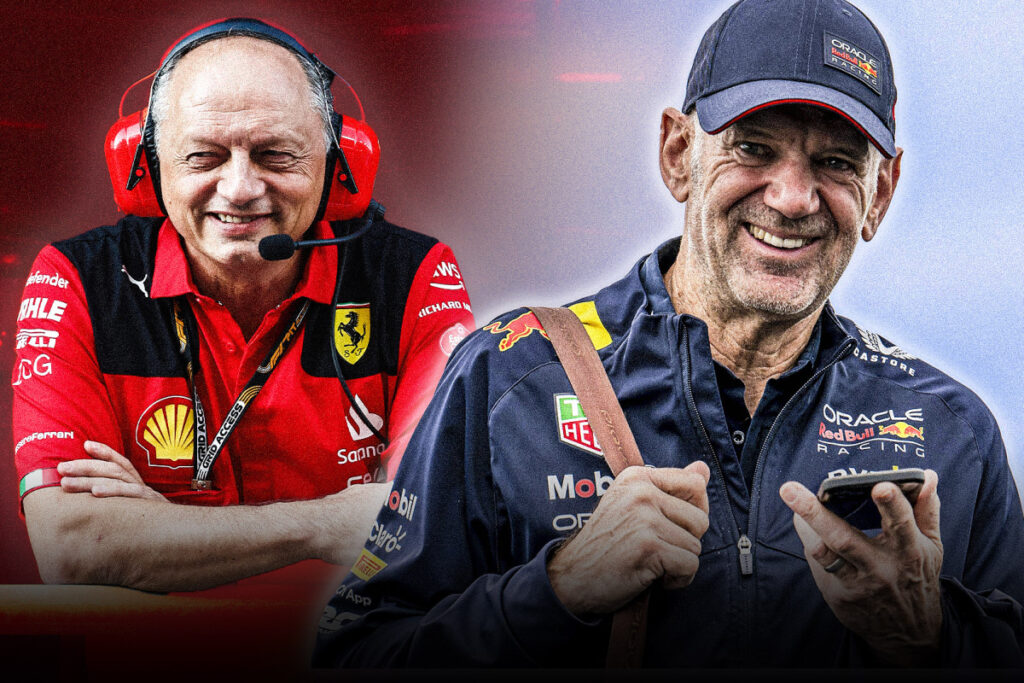
F1 drivers have plenty to think about while racing around the world at lightning speeds – including a complete and immediate understanding of what the marshals trackside are signalling. Our beginner’s guide provides all you need to know about F1 flags, with an all-in-one list to help you through the season.
Green Flag – Back to Racing!
The green flag is the simplest of them all, signifying that the track is clear and racing can continue as normal. It is displayed at the start of practice sessions, qualifying rounds, and races, as well as after incidents where a yellow or red flag was previously shown. If you see a green flag waving, it means the action is back on!

Red Flag – Session Stopped!
A red flag is a rare but significant sight in F1, as it indicates that a session or race has been stopped. This can be due to serious accidents, hazardous track conditions (such as extreme weather), or debris that makes it unsafe to continue. During practice and qualifying, drivers must return to the pits immediately, while during a race, they must proceed slowly to the pit lane and await further instructions from race control.
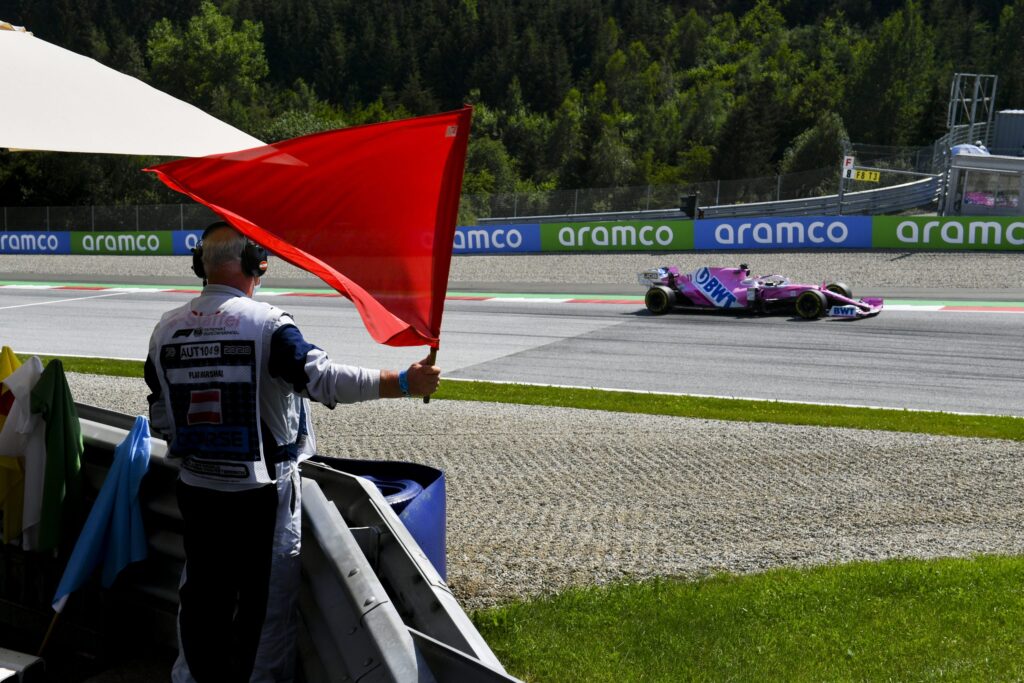
Yellow Flag – Danger Ahead!
The yellow flag signals danger and can be shown to drivers in two ways. A single waved yellow flag means drivers must reduce their speed, cannot overtake, and must be prepared to change direction due to a hazard beside or partly on the track. Drivers must show that they have lifted off the throttle in the affected sector. A double waved yellow flag signals a more severe hazard, meaning drivers must reduce their speed significantly, cannot overtake, and must be prepared to stop if necessary. This is used when a hazard is wholly or partly blocking the track or when marshals are working on or beside the track. In practice and qualifying, drivers must abandon their lap if double yellows are displayed, as it would be unsafe to continue pushing at speed.

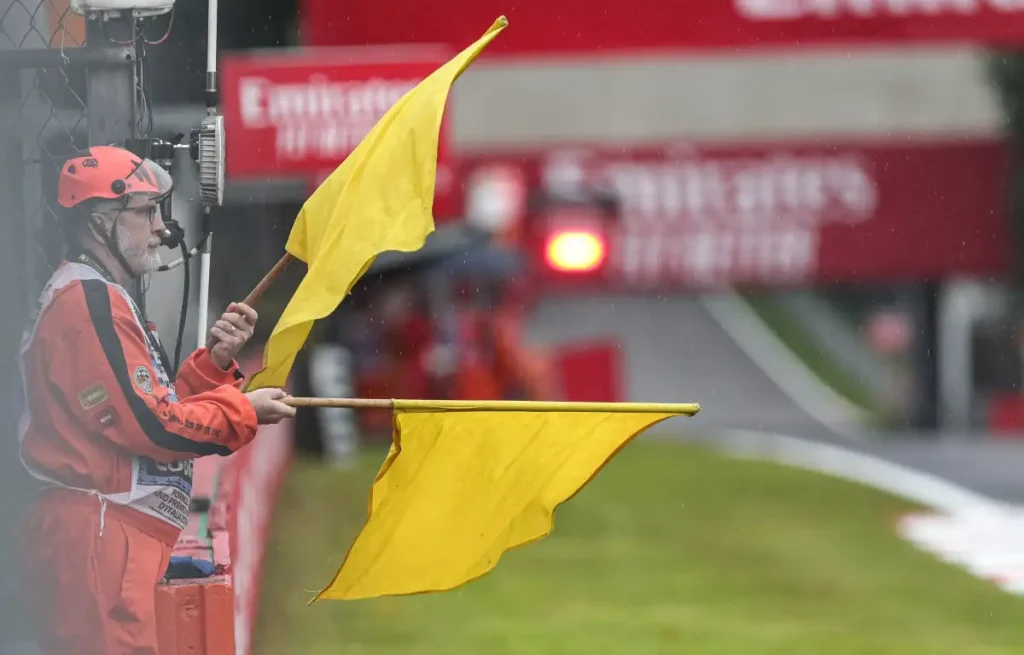
Yellow and Red Striped Flag – Watch Your Grip!
This striped yellow and red flag is used to inform drivers that the track surface ahead is slippery due to oil, water, or other debris. It serves as a heads-up to exercise extra caution, particularly in wet conditions.
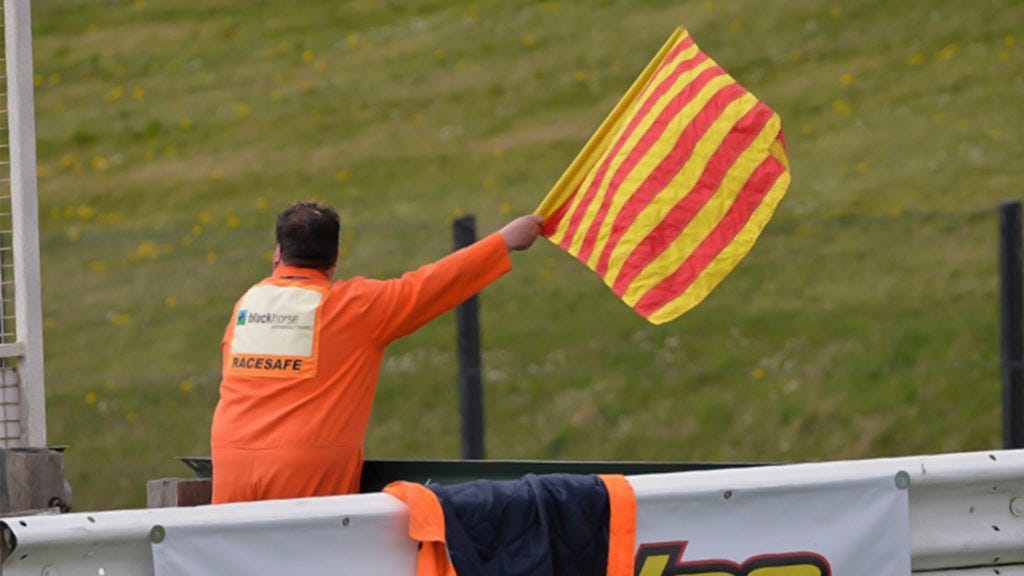
White Flag – Slow Vehicle Ahead!
A white flag is displayed when there is a much slower-moving vehicle on the track, such as a recovery or medical car. It can also be seen at the end of practice sessions when drivers are performing practice starts. This flag ensures drivers remain aware of speed differentials and avoid collisions.
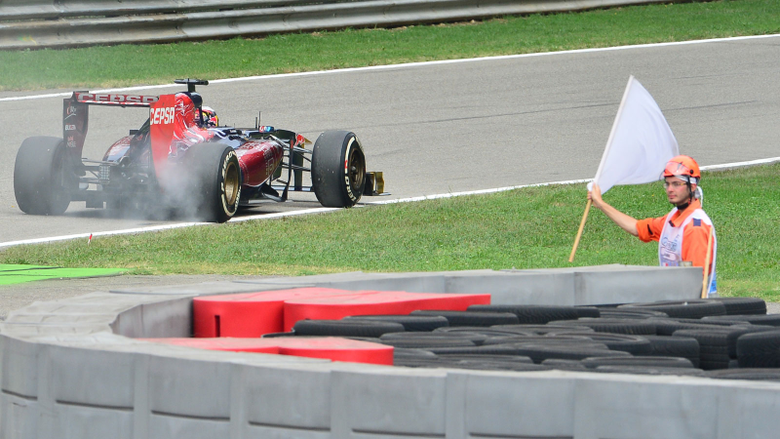
Blue Flag – Let Faster Cars Through!
The blue flag has different meanings depending on when it is shown. At all times, it is displayed to a driver exiting the pit lane to warn them that traffic is approaching. During practice, it informs a driver that a faster car is about to overtake them, which is crucial when slower cars are on cooldown laps while others are pushing for fast times. During the race, it is used to indicate that a driver is about to be lapped by a faster car. The driver must allow the car behind to pass at the earliest opportunity. If three blue flag warnings are ignored, the driver will receive a penalty for obstructing faster competitors.

‘Code 60’ and Full Course Yellow (FCY) – Speed Restrictions
In some cases, race control may impose a speed limit across the track or in a specific sector when dangerous conditions arise. If a single speed limit is imposed around the entire track, a Full Course Yellow (FCY) board will be displayed alongside a yellow flag. In some series, a purple flag with a white circle and the number 60, known as ‘Code 60,’ enforces a 60 km/h limit. If a variable speed limit is introduced, it will be displayed as a Virtual Safety Car (VSC) signal, requiring drivers to follow a predefined delta time. If a speed limit is applied only to a section of the track, the affected area will be marked with double yellow flags and a board labelled ‘SLOW.’
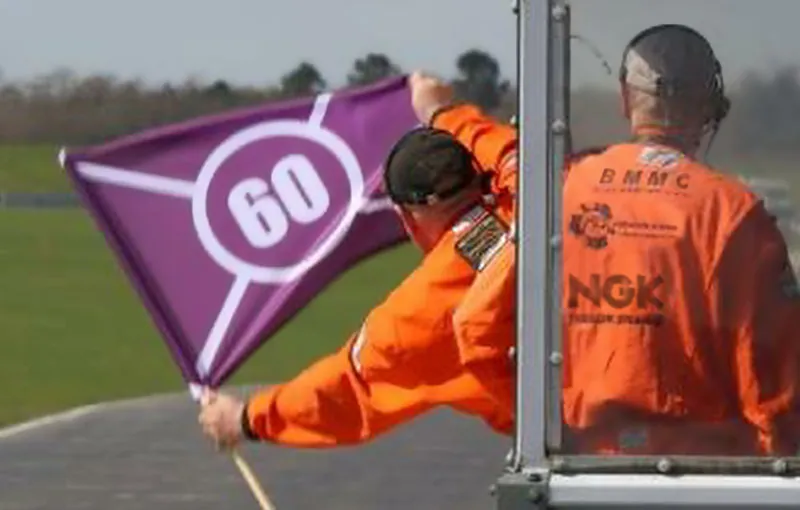
Read More: Beginner’s guide to F1 Penalties
Black Flag – Disqualification!
The black flag is the ultimate penalty in Formula 1, signifying that a driver has been disqualified and must return to the pits immediately. This is an extremely rare occurrence and is only used for severe rule violations.
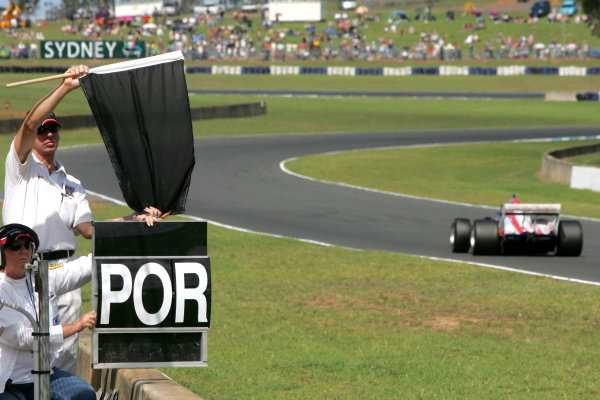
Black Flag with Orange Disc – Mechanical Issues!
The black flag with an orange circle informs a driver that their car has a mechanical problem that poses a danger to themselves or others. The driver must stop in the pits as soon as possible to have the issue rectified. If the problem is fixed to the satisfaction of the chief scrutineer, the car may rejoin the race; otherwise, it must remain in the pits.
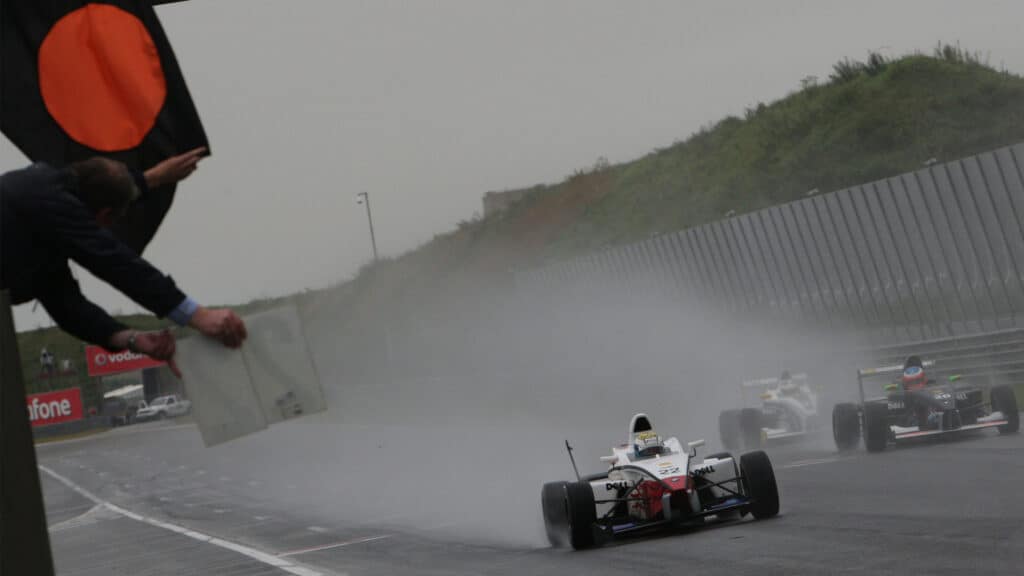
Black and White Flag – Last Warning!
The diagonally divided black and white flag is a warning for unsportsmanlike behavior. Unlike the chequered flag, which is also black and white but marks the end of a session, this flag is shown to a driver as a final warning before a penalty is issued. If the driver continues the offending behavior, they will be penalized. The flag is accompanied by the driver’s race number, ensuring that there is no confusion over who the warning applies to.

Chequered Flag – The Race Is Over!
The black and white chequered flag is the most famous flag in motorsport, signalling the end of a race, qualifying session, or practice session. Once this flag is waved, all drivers must complete their lap and return to the pit lane.
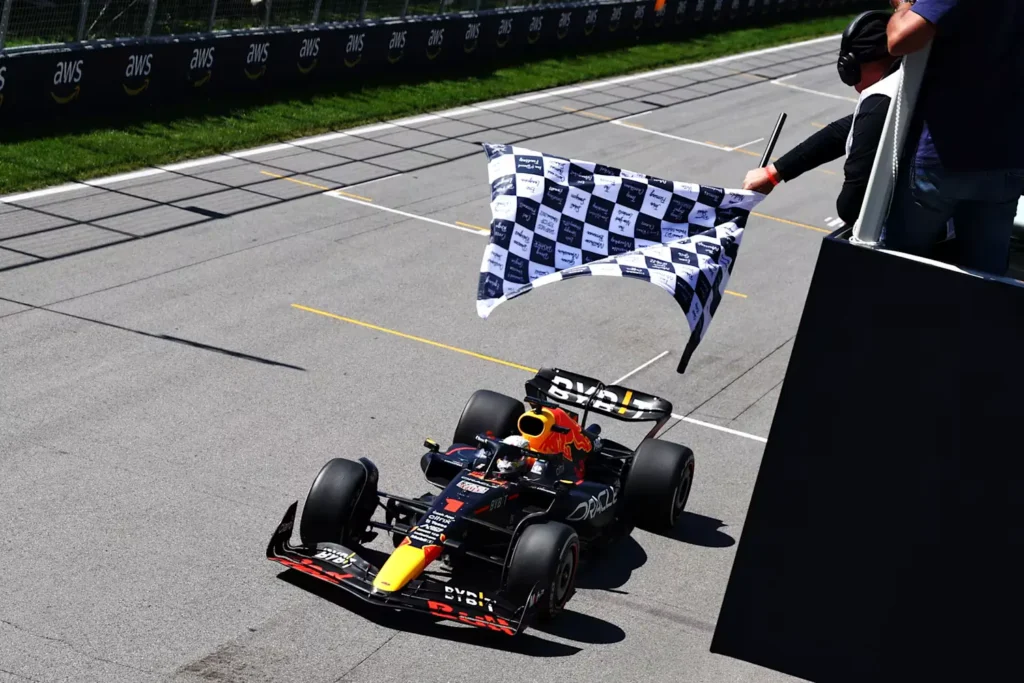
Flag Panels – Digital Warnings for Modern F1
In addition to marshals displaying flags trackside, Formula 1 circuits use digital light panels to ensure that messages are as clear as possible for drivers. These panels provide real-time updates, particularly useful in day-to-night transitions and changing weather conditions. With advancements in technology, digital flag displays have improved driver visibility and safety, ensuring that no crucial messages are missed.

At last to conclude
Flags are an integral part of Formula 1, keeping races safe, fair, and organized. From green flags signalling a clear track to red flags stopping the action, each flag plays a vital role in how a race unfolds. Understanding these signals not only helps drivers navigate the track but also enhances the viewing experience for fans. Now that you know your F1 flags, you’ll never miss an important race moment again!





